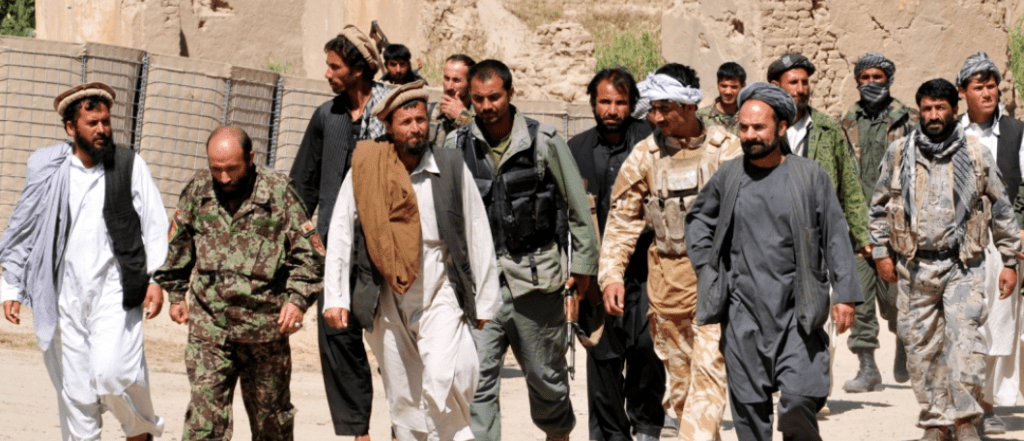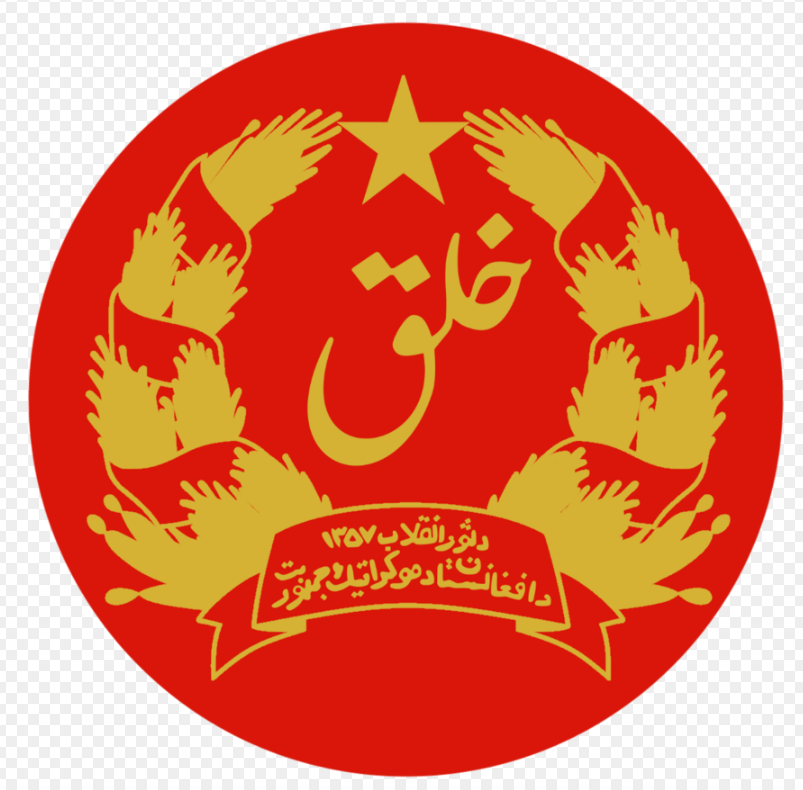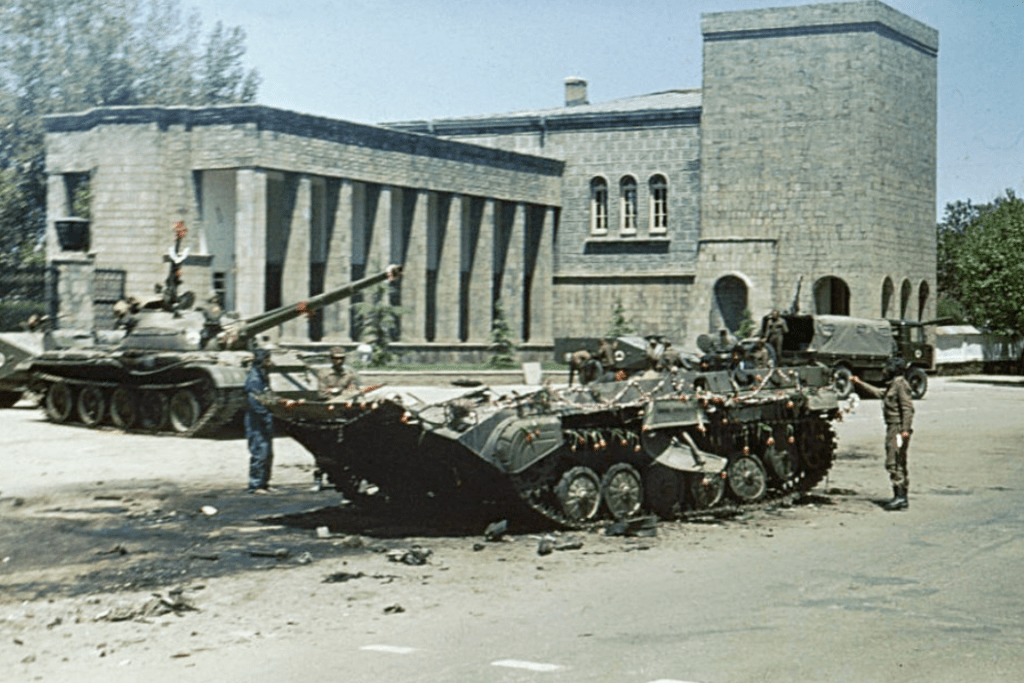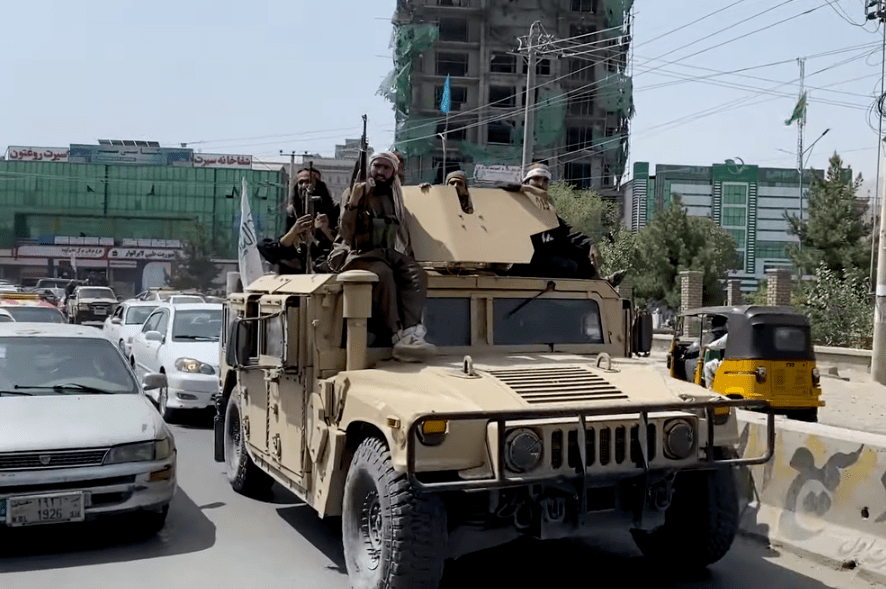By Hassan Jan
It has been a year since Taliban’s takeover of Kabul after the ignominious fall of Western-backed regime of Ashraf Ghani. The so-called democratic experiment of American imperialism and allied Western countries, built by militarily overthrowing Taliban back in 2001, came to an end after twenty years of colossal military expenditure.
The ‘democratic’ regime which the West hailed as the epitome of democracy, human rights and above all women’s empowerment proved to be a house of cards, led by the former criminal Jihadis who were nurtured by the same Western powers against the Saur revolution. Despite a huge expenditure of more than a trillion USD they could not build a viable and functioning state, a strong army or other infrastructure.
The whole political and democratic processes were always occupied by the warlords and former jihadis. On the other hand, the US and its allies miserably failed in containing the Taliban insurgency that had now more regional allies than they had in the 1990s.
The combination of these factors led to the demise of the regime and the misery continues for the Afghan masses. The new Taliban regime has proved to be a disaster for the masses on all fronts, especially on the economic front. With no economic prospects, the new government is emphasizing more on moral policing than on the real economic woes of the masses. Thus, Afghanistan is on a fast track to becoming rubble.
Nurturing the counter revolutionary Mujahideen
In the last four decades, reactionary and counter-revolutionary insurgencies have been plaguing Afghanistan. In order to crush the nascent revolutionary government formed in the wake of the Saur Revolution of April 1978, American and Western imperialism, along with their regional stooges, nurtured and promoted counter revolutionary Mujahideen and a narco-economy was created to fund them.
This operation was called “Operation Cyclone” and millions of dollars were poured into it to fight the revolutionary regime led by the People’s Democratic Party of Afghanistan (PDPA), who dared to overthrow capitalism and landlordism in Afghanistan and to build a prosperous society. Thousands of counter-revolutionary mercenaries (Jihadis) were recruited from Pakistan and all across the world, trained and dispatched to Afghanistan.
The decline and economic crisis of the Soviet Union and the internal strife of the PDPA ultimately resulted in the demise of the revolutionary government. Despite all their shortcomings, the revolutionary government withstood the entire Jihadi onslaught. It was the collapse and ultimate disintegration of the Soviet Union which proved detrimental to the revolutionary government, as it cut off the necessary economic lifeline to the country.
After the fall of the PDPA regime in 1992, the different factions of Mujahideen, supported by different regional powers, fiercely fought amongst themselves over control of Kabul. This civil war turned Afghanistan into debris. Such a state of affairs was not even in the interests of American imperialism, as it was greedily drooling over the untapped natural resources of the newly separated states of central Asia.
Mujahideen had strategic backing of USA
The Taliban emerged out of the same Mujahideen in 1994. With the strategic backing of Pakistan and the tacit support of the US, the Taliban soon overwhelmed other Mujahideen groups and captured Kabul in 1996. In order to extract the riches of Central Asian countries, a strong central government in Kabul was necessary, as it would guarantee the safe passage of resources from these countries through Afghanistan into Pakistan and then to Arabian sea and the international market.

The American oil and gas exploration company Unocal, eyeing the gas pipeline contract, supported the Taliban’s ascent. However, the conflicting interests of various regional and imperialist powers rendered the project unsuccessful. Using 9/11 as a pretext, the USA invaded Afghanistan to supposedly punish the Taliban and Al-Qaeda for the attacks and build ‘democracy’ in the country.
While invading Afghanistan, American imperialism had some explicit and implicit goals. The explicit goals were the overthrow of Taliban, the crushing of fundamentalism, and establishing democracy, human rights and the empowerment of women, etc. The implicit goals were the containment of China, keeping an eye on Russia, threatening Iran and the plunder of the vast mineral resources of Afghanistan.
After twenty years of the occupation of Afghanistan US imperialism and its allies miserably failed in all these objectives. It is an irony that America wanted to build ‘democracy’ and crush Islamic fundamentalism with the help of the same Mujahedeens whom they trained and armed to overthrow the revolutionary government of the PDPA.
These Mujahideen, warlords and drug lords, were the face of western ‘democracy’ installed in the country.
Expansion during the post-war boom
American imperialism started this process of “nation-building” in Afghanistan at a crucial historical juncture, when the neo-liberal economic model of world capitalism was reaching its limits. The last major expansion in productive forces under global capitalism was during the post-war boom, owing to the colossal destruction of productive forces in the war.

However, that boom came to an end in the 1973 oil crisis. Since then, in order to increase the declining rate of profit, world capitalism has resorted to neo-liberal recipes of cuts, austerity, privatizations, downsizing, rightsizing, deregulations and reduction of state intervention in the economy.
This new model of ‘trickle down economics’ has been a disaster even for the masses of the advanced capitalist countries. All the major sectors of the economy were relinquished to the private sector to maintain the rate of profit. This neo-liberal economic recipe unleashed a new breed of monster billionaires, while subjecting hundreds of millions of people in abject poverty around the world.
At this stage of world capitalism, the ‘reconstruction’ and installation of ‘democracy’ in Afghanistan was bound to be doomed. Global capitalism had lost its historical progressiveness. Neither they had envisaged such ‘reconstruction’ and nor was there any possibility for such endeavour. They had their own designs in which they completely failed.
Despite all their huge expenditure on reconstruction, they could not transform Afghanistan into a modern state, as the Americans had done in South Korea, Hong Kong and other island states around China during post-war boom, to contain the spread of left movements. All their construction and infrastructural projects in Afghanistan were designed for military and strategic purposes.
As far as democracy is concerned, the same warlords and ex-Mujahedeens were brought to power, whether Hamid Karzai or Ashraf Ghani. The rhetoric of human rights or women’s rights only benefited certain sections of urban middle classes, who emerged as a result of global aids and NGO investments, while the rest of Afghanistan continued to suffer.
The black economy around the drug trade continued to thrive, which is, even today, the economic lifeline of Taliban. Even the personnel of the American embassy in Kabul were involved in the illicit drug trafficking. An estimated 90 per cent of Afghanistan’s economy was (and still is) undocumented or informal in which poppy cultivation and the drug trade are the largest part.
Informal economy could not be contained
The presence of such an economy ultimately breeds corruption and chaos in the formal hierarchy of the state institutions. During the two decades of democracy in the country, neither the Afghan government nor the Americans could contain this informal economy, as Afghan government officials were involved in the profitable black economy. Ultimately, their “nation-building” project failed miserably.

Meanwhile, despite all their state-of-the-art military equipment and military superiority, NATO forces could not contain the Taliban insurgency. Taliban had safe houses in Pakistan and had the uninterrupted strategic and military support of Pakistan’s deep state.
Unlike the 1990s, the Taliban had now increased their regional reach by forging cordial relations with Iran, Russia and China. When the Americans failed in curbing the Taliban, they promoted IS-K (Islamic State-Khorasan) against it, by causing defections in the Taliban ranks and importing ISIS mercenaries from Iraq and Syria.
The Taliban’s reach into Iran and Russia came to light when the then Emir of the Taliban, Mullah Akhtar Mansoor, was killed in Pakistan near the Iranian border, by a US drone strike. It was later revealed that Mullah Akhtar Mansoor was actually returning from visits to Iran and Russia to garner support against America and the IS-K.
As per the estimates of Aljazeera reports, US spent a colossal $2 tr in military expenditure in Afghanistan in the last two decades. Despite this, the US had to negotiate with the Taliban for a graceful exit. The Qatar Agreement with Taliban was basically an instrument of surrender on the part of the USA. They had completely failed in all their objectives.
Afghan government kept out of Taliban-US talks
They could not crush Islamic fundamentalism and reconstruct Afghanistan, and nor could they contain Iran, Russia and China. During the whole process of negotiation with the Taliban, the USA kept their handpicked Afghan government led by Ashraf Ghani aloof from the talks, which speaks volumes about their view of the government they had built in the last two decades. They knew the degree of relevance and potential of Afghan government and who were the real powers-that-be in the country.
As soon as the Americans started their withdrawal, the Afghan government started to crumble like a house of cards. The almost 300,000-strong Afghan Army and security forces could not present any formidable resistance in the face of the Taliban’s offensive.
On the one hand, the massive corruption and mismanagement had long rendered the Afghan army impotent. Half of the army personnel were simply a ‘ghost’ army i.e. they were present only on paper. On many occasions, the army surrendered because of the non-arrival of supplies. The soldiers had to bribe the authorities to provide them with food and other vital supplies.
On the other hand, the political leadership (the warlords and ex-Mujahideen) and government had no plan to offer any resistance. They had their own plans of negotiating with Taliban. They were simply the proxies of difference regional powers.
For example, Herat’s warlord, Ismail Khan, initially offered some resistance but ultimately upon the instructions of his masters in Tehran, he surrendered to the Taliban. Later he fled to Iran.
Ghani fled with suitcases full of cash
The swift fall of provinces owes much to the backdoor diplomacy of warlords and tribal chiefs with the Taliban. In this mayhem, President Ashraf Ghani was utterly clueless. What else can be expected from an ex-official of international financial institutions who was trained only in clerical duties?
In the absence of a centralized leadership and vital supplies, the commanders and high-up officials of one province after another surrendered to Taliban. On the fateful day of August 15 2021, President Ashraf Ghani boarded a plane and fled with, reportedly, millions of dollars in suitcases. The Taliban captured Kabul even before the scheduled completion of the American withdrawal, of August 31.
The defeat of American imperialism at the hand of the one of the most reactionary outfits would not have been possible were it not for the support of Pakistan, Iran, Russia and China. This time around, the Taliban’s capture of Kabul was relatively bloodless, due to the involvement and consensus of these regional powers. One of the implicit goals of the American invasion had been the containment of Iran and Russia and besieging China. IS-K was the brainchild of American imperialism designed for this purpose.
Sanctions imposed on Afghanistan
The reactionary triumph of Taliban has unleashed a new era of misery for the Afghan masses. American imperialism with all its economic and military might could not build a viable state; how can a group of reactionaries with no resources or economic program transform Afghanistan into a better society?
Ever since the advent of Taliban government, Afghanistan has been blockaded economically. Sanctions have been imposed and the country has been cut off from the global market, resulting in the winding up of the meagre economic activity around the legal economic infrastructure.
Before the Taliban’s takeover last August, the country depended for 75 per cent of its economy on foreign aid. Immediately after the collapse the regime, all this foreign assistance came to a halt, resulting in mass unemployment, due to non-payment of salaries. As far as the regional powers (Iran, Pakistan, Russia and China) supporting new Taliban regime are concerned, they can’t provide as much economic assistance as Afghanistan used to receive during the last two decades.

For example, China has its eyes on vast mineral resources of Lithium, Copper and other elements and has pledged to invest in the country. But due to uncertainty they are hesitant. Iran, Pakistan and Russian are already reeling from economic crises.
According to a UN report, more than half a million people lost their jobs in the last year alone. It is estimated that 97 per cent of the population will sink below the poverty line in 2022. Social media is rampant with pictures of former journalists and media employees selling fruit on the streets of Kabul and other cities.
The heart-wrenching scenes of people gathering around an almsgiver for a piece of bread have become commonplace in Kabul. Queues of poor women outside bakeries, waiting for a loaf of free bread, have become the new normality. The number of beggars has also increased in the country. 95 per cent of Afghan families are facing food insecurity.
According to a survey by Save the Children in February 2022, “82 per cent of Afghan families had lost wages since August 2021 and almost one in five were sending children to engage in labour (for miniscule wages), while 7.5 per cent stated they were resorted to begging or requesting money or food from charity.”
On the one hand, with no economic resources or viable economic program, the Taliban are trying to impose their reactionary misogynist morality on society. Girls have been barred from educational institutions. Women employees of different departments have been instructed to provide a male replacement for their jobs so they can perform their duties in their place. Those working in TV channels have been directed to cover their faces and wear Islamic hijab.
Violent scuffles between different Taliban factions
On the other hand, rifts between Taliban factions are also raising their heads. In the initial days of their power, there was a violent scuffle within the Taliban leadership during a meeting in Kabul. Reportedly, the brawl happened in the wake of power sharing between different factions, the main ones among them the Haqqani network, led by Sirajuddin Haqqani, and the Mullah Barader faction.
Mullah Barader was reportedly injured during the scuffle and he fled to Kandahar. Haqqanis are considered to have close links with Pakistan’s deep state. Currently, Afghanistan’s internal security and interior ministry are headed by them.
Mullah Barader, on the other hand, had led the negotiation with the USA in Doha, which resulted in the withdrawal. Reportedly, he wanted to strike a separate deal with USA in 2010 against the wishes of Islamabad, when he was arrested in Karachi and held till 2018. He is considered to be in favour of a more inclusive government in Kabul. In conditions of a bleak economic outlook, more such brawls and internal rifts will be on the horizon.
Afghanistan has been in the throes of imposed civil wars for the last four decades. This chaos has derailed all the political processes. Political activism has been replaced by the bullying of warlords, Mujahideen and now Taliban. It is literally a graveyard and debris which the Taliban has captured, with no economic prospect.
Suppression of resistance will further anger the masses
With each passing day, the country is heading towards an ever-greater humanitarian crisis. The masses will definitely resist such state of affairs. The protests against gender discrimination by women have shown the possibilities inherent in the situation. If the Taliban tries to suppress such mass resistance, it will further infuriate the masses and complicate the already volatile situation, because Afghanistan is not like the theocratic state of Iran where economic opportunities and social progress are at a far higher level.
Further repression can lead to a disintegration of Afghanistan on ethnic lines. The so-called National Resistance Front (which is an alliance of reactionary former Jihadis), together with IS-K, can launch deadly attacks on the Taliban, which can turn into a dangerous bloodbath.
But things can go in other directions too. The war in Ukraine has exacerbated the crisis of the already fragile state of Pakistan. The crisis of the state has blown up. Inflation of basic commodities has skyrocketed in Iran. This can lead to social explosions in these countries. Any progressive change in Islamabad or Tehran will be a beacon of hope for Afghanistan. Only such a revolutionary change in Pakistan or Iran can provide a sigh of relief for the suffering Afghan masses.
From the Asian Marxist Review. The original article can be found here.
See also book review on Afghanistan corruption, here.
[Picture at top: bread being distributed in Kabul. All pictures from Wikimedia Commons]



